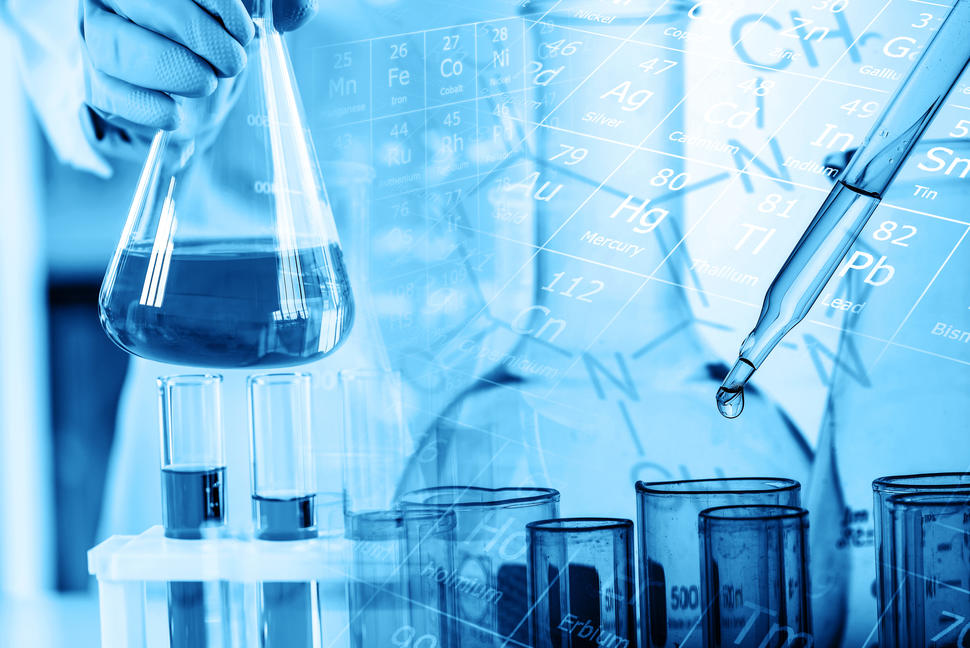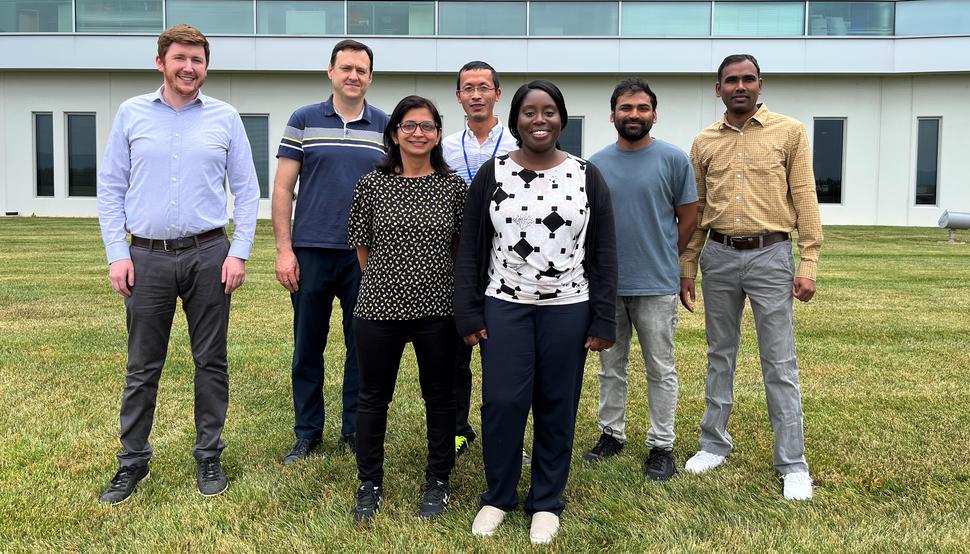RAS Initiative Chemistry Research
The RAS Initiative Chemistry Research Team uses fragment-based drug discovery (FBDD) approaches to develop low molecular weight (<300 DA) screening hits, known as fragments, into potent inhibitors with favorable drug-like properties.
FBDD is a powerful tool that allows efficient sampling of chemical space and is often applied to traditionally challenging targets such as sites of protein-protein interactions.
In collaboration with teams throughout the RAS Initiative, we use sensitive screening methods including disulfide tethering technology and biophysical approaches such as NMR, X-ray crystallography, and Surface Plasmon Resonance (SPR) to advance weakly bound fragments towards lead-like molecules with improved binding affinity.
Progress
- We established a structurally diverse tethering library of over 2,000 disulfide-containing fragments. This powerful screening resource is being used to identify starting points for future drug discovery campaigns against challenging targets.
- We have designed and validated heterobifunctional probes for use in extended tethering screens. These chemical tools allow us to perform disulfide tethering screens against sensitive binding pockets where introduction of a cysteine residue would prove problematic.
Projects
The RAS Chemistry team provides medicinal chemistry support to drug discovery projects throughout the RAS Initiative. We are involved in the design, synthesis, and characterization of small molecules for use as potential therapeutic agents in the treatment of RAS-driven cancers. Ongoing projects include the following:
- Development of RAS fragment screening hits
- Targeting of RAS effector proteins
- Investigation of novel disulfide tethering technologies
Tools
The RAS chemistry team applies modern synthetic organic chemistry approaches to advance drug discovery. Our well-equipped labs including automated flash chromatography systems for the purification of crude reaction mixtures, and preparative HPLC for isolation of screening compounds.
We have access to a Biotage initiator+ microwave reactor and H-cube mini plus flow hydrogenation system to safely accelerate and improve challenging chemical reactions.
Additionally, we use sophisticated analytical equipment including an Agilent 1290 UHPLC-MS System for reaction monitoring, and a Bruker Ascend 500 MHz Avance Neo NMR Spectrometer for characterization of chemical compounds.
The RAS Initiative Chemistry Research Team
Team lead and contact
Dr. David Turner
david.turner@nih.gov
301-846-1070
Collaborators
The RAS Chemistry Research Team has partnered with groups throughout industry and academia to tackle challenging drug discovery projects, including the following:
- TheRas Inc.
- The University of California, San Francisco
- Lawrence Livermore National Laboratory
- Argonne National Laboratory
Publications
- Wang, B.; Xu, R.; Wallace, E.; Lightstone, F.; Yang, Y.; Bisignano, P.; Maciag, A.E.; Turner, D.M.; Simanshu, D.K.; Chan, A.H.W.; Zhang, Z.; Brassard, C.J. Liao, T. (2022). Compositions and methods for inhibition of RAS (WO2022177917)
WO2022177917 COMPOSITIONS AND METHODS FOR INHIBITION OF RAS (wipo.int) - Mccormick, F.; Renslo, A.; Turner, D.; Maciag, A.E.; Dyba, M.; Vo, E.D.; Saavedra, J.; Kumari, V. (2022). K-RAS Modulators (US20200247762)
US20200247762 K-Ras modulators (wipo.int) - McCormick, F.; Renslo, A.R.; Turner, D.; Gysin, S.; Maciag, A.E.; Chertov, O. (2021). K-RAS Modulators (US20210196695)
US20210196695 K-RAS MODULATORS (wipo.int) - Low, E.; Duncton, M.A.J; Turner, D.; Renslo, A.R.; Maciag, A.E. (2019) K-RAS modulators with a cyanoacrylamide moiety. (WO2019204442 A1)
WO2019204442 K-RAS MODULATORS WITH A CYANOACRYLAMIDE MOIETY (wipo.int) - Low, E.; Duncton, M.A.J; Turner, D.; Renslo, A.R.; Maciag, A.E.; Brassard, C.; Kumari, V. (2019) K-RAS modulators with a vinyl sulfone moiety. (WO2019204449 A1)
WO2019204449 K-RAS MODULATORS WITH A VINYL SULFONE MOIETY (wipo.int) - Low, E.; Pandey, A.; Duncton, M.A.J.; Turner, D.; Renslo, A.R. and Samanta, S.K.; Hamza, D.; Duraiswamy, A.J.; Maciag, A.E. Adcock, H.V. Onions, S.T. Brassard, C.; Kumari, V. (2019). K-RAS modulators with a vinyl sulfonamide moiety. (WO2019204505)
WO2019204505 K-RAS MODULATORS WITH A VINYL SULFONAMIDE MOIETY (wipo.int)

